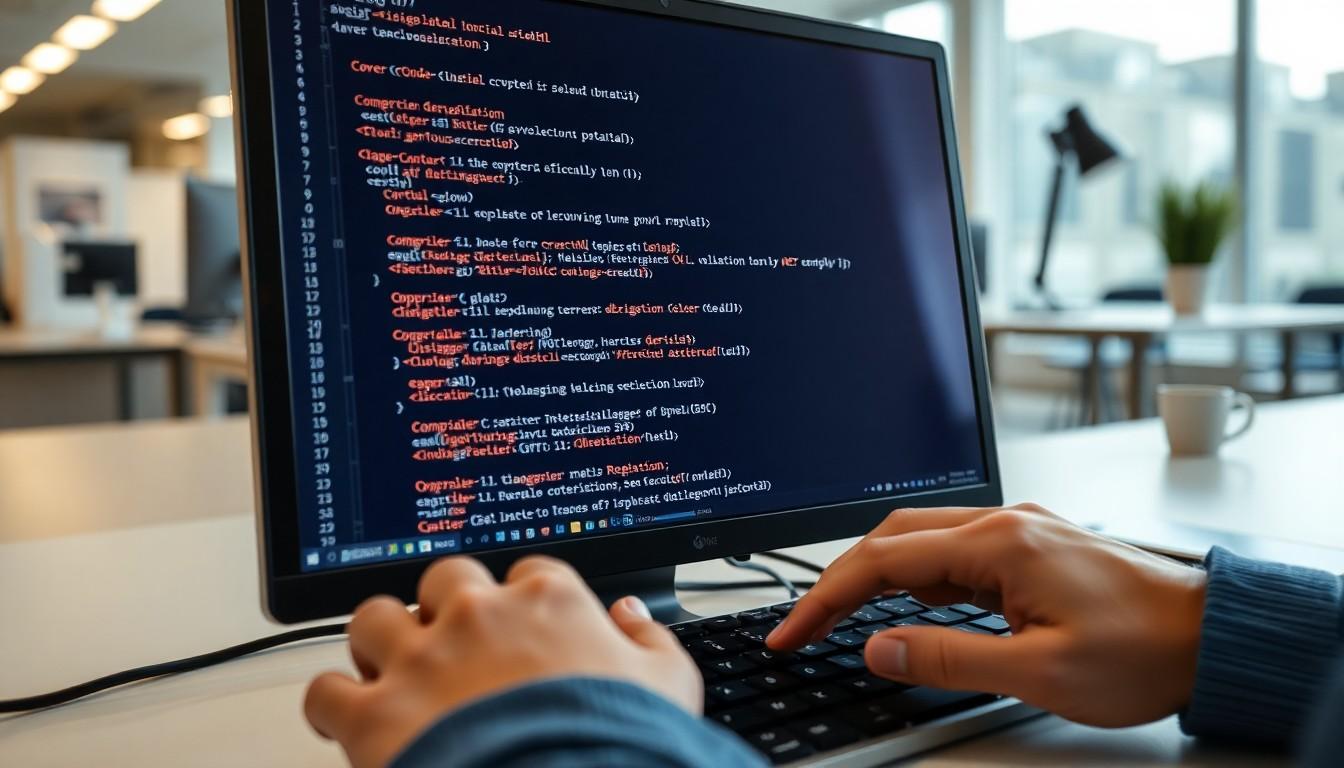Picture this: you’re deep into coding, feeling like a programming wizard, when suddenly—bam! The infamous Python error oxzep7 crashes the party. It’s like that uninvited guest who spills punch all over your favorite rug. Frustrating, right? But fear not! This article dives into the quirks of this pesky error and how to tackle it like a pro.
Overview of Python Error Oxzep7 Software
Python error oxzep7 disrupts coding by causing various issues during program execution. It often occurs due to conflicts in libraries or incorrect syntax. Developers face challenges when this error surfaces, leading to stalled projects and frustration.
Addressing the root cause requires systematic troubleshooting. Identifying specific error messages contributes to a better understanding of the underlying problem. Conflicting modules frequently trigger oxzep7; checking compatibility is crucial to resolving these conflicts.
Debugging techniques like print statements or using a debugger assist in diagnosing the error. Simple errors, such as incorrect variable names, can also lead to oxzep7. Reviewing the code for typos and syntax mistakes often resolves the issue.
Additionally, updating libraries and dependencies can eliminate many common triggers of this error. Furthermore, ensuring Python is up to date minimizes vulnerabilities that may lead to oxzep7. Communities and forums offer valuable insights, sharing experiences and solutions for similar issues. Engaging with these resources leads to quicker resolutions.
Solving Python error oxzep7 involves careful diagnosis and attention to potential conflicts. Developers should prioritize error messages, check compatibility, and keep their environment updated. Effective troubleshooting methods are essential for navigating and eliminating this error efficiently.
Common Causes of Oxzep7 Error

The oxzep7 error often emerges from various issues within a Python environment. Misconfiguration of settings or libraries often leads to such errors, slowing down project progress.
Misconfiguration Issues
Misconfiguration typically arises from incorrect settings in Python scripts or the environment. Developers might overlook environment variables, leading to unexpected results. Understanding the specific configuration needed for libraries helps prevent errors. For instance, using the wrong Python version can create significant complications. Additionally, mistakes in paths for libraries or modules can also trigger the oxzep7 error. Ensuring that all configurations align with project requirements reduces the likelihood of encountering this error.
Dependency Conflicts
Dependency conflicts frequently cause the oxzep7 error in Python projects. Outdated or incompatible libraries may cause functions to clash, resulting in errors. Using multiple versions of the same library can create confusion, affecting code execution. Checking for version compatibility can help identify these conflicts. Tools like pip can assist in managing library versions effectively. By maintaining updated dependencies, developers minimize the chance of running into the oxzep7 error. Keeping a close watch on newly released library updates ensures a smoother development experience.
Troubleshooting Steps for Oxzep7 Error
Addressing the oxzep7 error requires a systematic approach. Follow these troubleshooting steps to effectively resolve the issue.
Step-by-Step Guide
- Identify the specific error message that appears when the oxzep7 error occurs.
- Verify the compatibility of libraries by checking versions against project requirements.
- Check your syntax for any typos or incorrect variable names that may cause conflicts.
- Update Python and all relevant libraries to their latest versions to reduce errors.
- Review environment variables to ensure they’re correctly configured for your project.
- Use print statements or debugging tools for deeper insights into the issue.
Useful Tools and Resources
Numerous tools streamline troubleshooting for the oxzep7 error. Python’s built-in debugger, PDB, provides an effective way to track down issues.
Error-checking libraries like pylint help identify syntax errors and potential bugs within your code. Online forums such as Stack Overflow often contain discussions about the oxzep7 error, offering solutions from community members. Check official documentation for specific libraries to understand compatibility and usage guidelines. Utilizing version management systems like pipenv can simplify tracking and updating dependencies, minimizing conflict risks.
Best Practices to Avoid Python Error Oxzep7
Ensuring correct syntax helps prevent the oxzep7 error. Reviewing code for typos or misplaced punctuation often resolves issues before they escalate. Keeping up with the latest Python libraries and updates significantly reduces compatibility conflicts. Avoiding outdated libraries minimizes the likelihood of encountering this error.
Regularly utilizing version management tools, like pipenv, simplifies handling dependencies. Each project requires a specific set of libraries, so updating them whenever necessary maintains project stability. Engaging in community forums provides insights into common pitfalls other developers face. Frequently checking forums such as Stack Overflow can reveal quick fixes and advice from experienced programmers.
Properly configuring environment settings prevents misconfiguration issues. Double-checking environment variables ensures they align with project requirements. Additionally, verifying the Python version in use is crucial. Incompatibilities can arise from using a version that doesn’t support certain libraries.
Implementing systematic debugging techniques aids in swift error resolution. Print statements or Python’s built-in debugger (PDB) can pinpoint problematic areas effectively. Involving error-checking libraries, like pylint, identifies issues during development, allowing for early adjustments. Routine testing throughout the development process minimizes errors.
Tracking library versions diligently is essential for avoiding conflicts. Relying on tools like pip can assist in managing these updates, ensuring libraries function seamlessly together. Addressing potential issues proactively fortifies projects against interruptions caused by the oxzep7 error.
Conclusion
Addressing the Python error oxzep7 is crucial for maintaining a smooth coding experience. By understanding its common causes and implementing systematic troubleshooting methods, developers can effectively minimize disruptions. Staying proactive with updates and utilizing version management tools can significantly reduce the likelihood of encountering this error. Engaging with community resources also provides valuable support, enabling developers to share insights and solutions. Ultimately, a focus on best practices and thorough debugging will empower developers to navigate the challenges posed by oxzep7, ensuring their projects remain on track.

